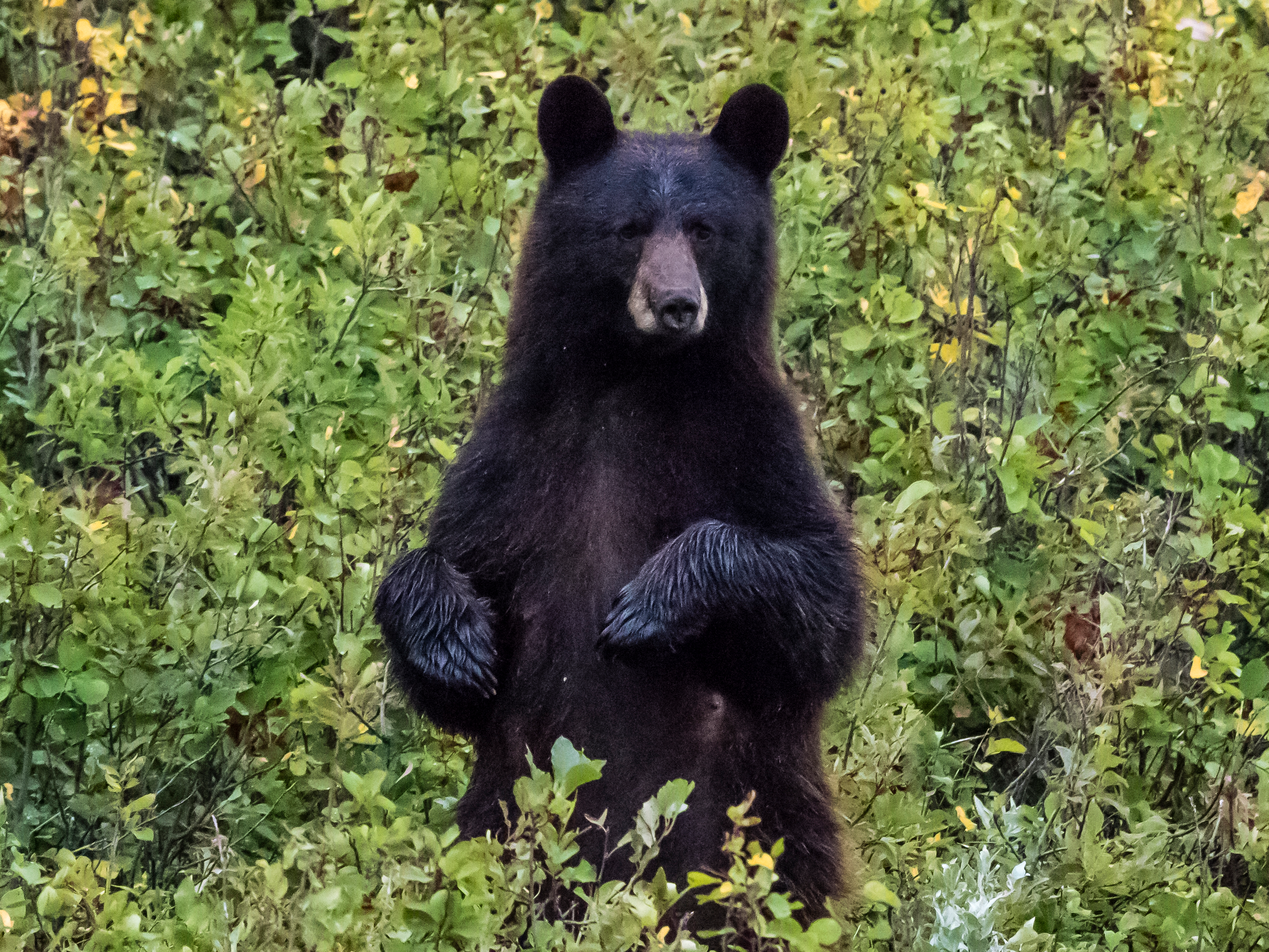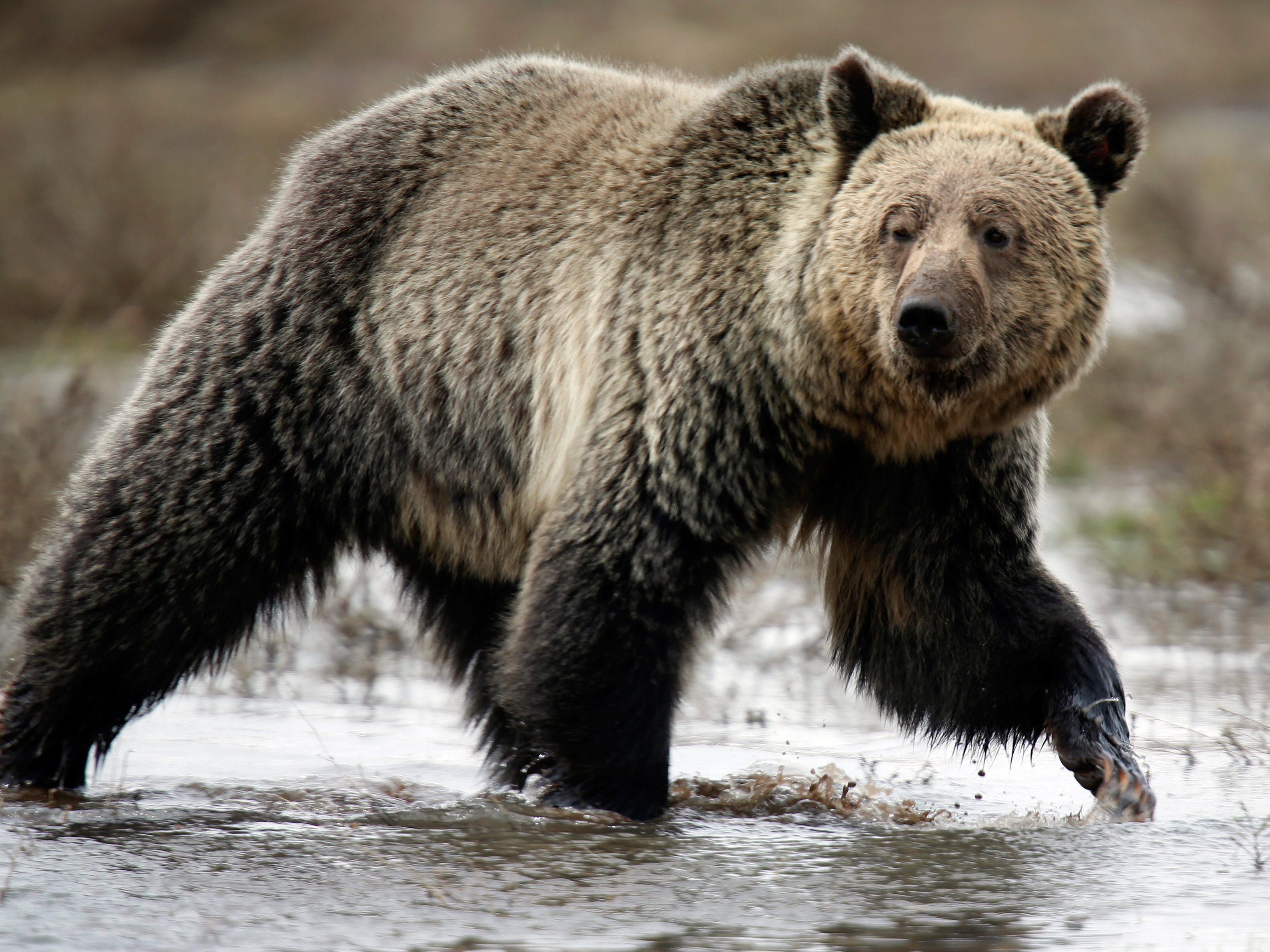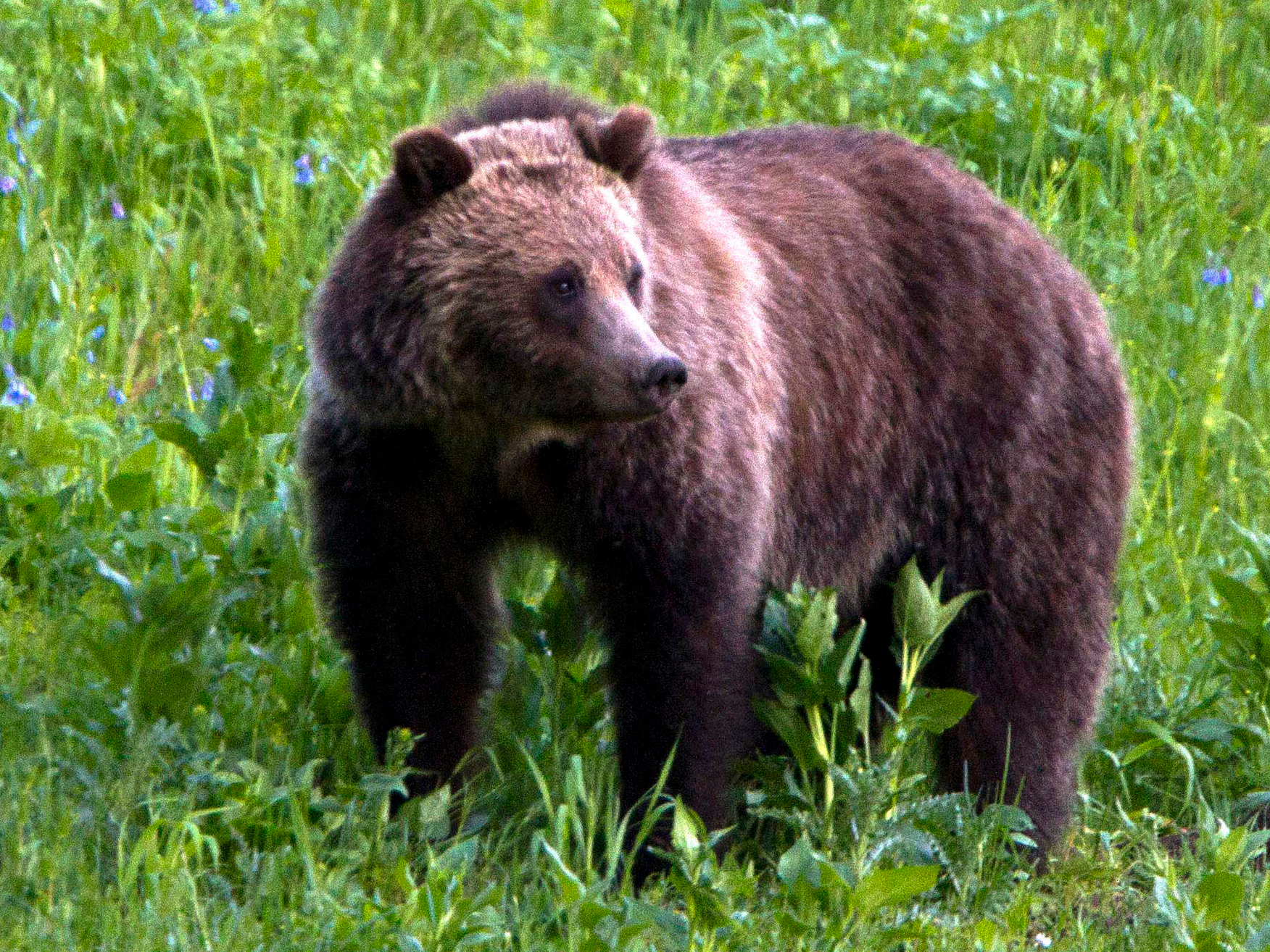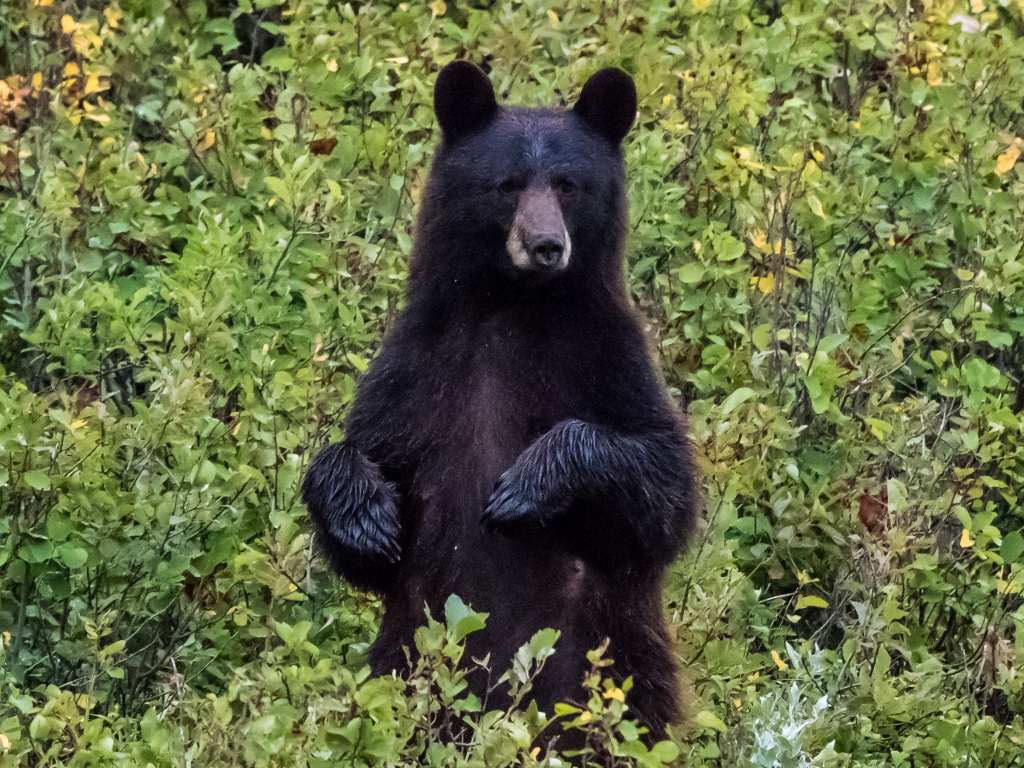
Getty/RF
- Bear attacks don't occur often and they can typically be avoided if you take safety precautions.
- If a grizzly bear attacks you, you may want to play dead.
- If a black bear attacks you, your best bet is probably to fight back – aim for the bear's face.
- Visit Insider's homepage for more stories.
Bear attacks can be dangerous and sometimes fatal but, fortunately, your chances of ever being attacked by a bear are slim.
For reference, between 1900 and 2009, only around 63 people were killed by non-captive black bears in the United States and Canada combined, according to research published in the Journal of Wildlife Management in 2011.
And, according to the US National Park Service, your odds of being injured by a bear in Yellowstone National Park are about one in 2.7 million.
Nevertheless, exploring the wilderness means dealing with the possibility of encountering animals, including bears.
Here's what you should and should not do if you encounter a bear or are ever attacked by one.
If you surprise a bear, move sideways and be careful not to drop your pack

Jim Urquhart/Reuters
If you accidentally surprise a bear while hiking or walking in the woods, focus on identifying yourself as human and making sure the bear knows you're not a threat.
According to the US National Park Service, you should stay still and slowly wave your arms above your head. Remain calm and speak in low tones. Do not try to imitate a bear roar and avoid making any kind of high-pitched sound.
Though your instinct may be to turn and run, that is actually one of the worst things to do when faced with a bear. Just like dogs, bears have a predatory instinct to chase running animals - so running may only make the bear chase you.
You'll also want to avoid trying to climb a tree, as grizzly bears and black bears are also able to climb them.
Back away from the bear slowly, aiming to move sideways rather than straight back as it is non-threatening and it can help you lessen your chances of tripping. Be sure to keep your backpack or hiking pack on you as it might provide you with some protection if the bear does attack.
Typically, a bear will perform a 'bluff charge' before it decides whether or not to actually attack
According to the US National Park Service, there are two types of bear charges to keep an eye out for.
The first and most common kind is known as a bluff charge. During a bluff charge, the bear may lift its head and point its ears upward in order to appear larger. The bear may bound towards you using its front paws but will veer off to the side or stop before actually attacking you. At this point, it might roar or even run off.
It's probably wise if you don't run away during a bluff charge. Doing so might actually cause the bear to attack. Instead, stand your ground and speak to the bear in a calm voice, waving your arms above your head to make yourself appear larger and help the bear understand that you are human.
If the bear stops or retreats, slowly step away from the bear while making sure you can still see the animal until it moves away or you reach safety.
An aggressive charge usually means that a bear is about to attack
The second type of bear charge is an aggressive charge. This typically occurs when a bear is stressed and feels it needs to attack in order to protect itself or its young.
If a bear is about to charge aggressively, it may open its mouth wide or snap its teeth together. During an aggressive charge, a bear may have its ears and head pointed down. If you have bear spray with you, this is the time to use it.
An aggressive charge will usually end with the bear making contact with you or physically attacking you.
If a bear seems threatened, quickly identifying the species can help you figure out what to do
When it comes to bear attacks, knowing how to tell the difference between a black bear and a grizzly bear might save your life. As Joseph Goldes, backcountry guide and outdoor skills instructor told Insider, these two species respond differently to the same human behavior.
In general, grizzly bears are larger than black bears. But the size of the bear's shoulders and the shape of its face are better indicators as to which species of animal you're dealing with, as a bear's size can vary based on region and season.
According to the International Association for Bear Research and Management, black bears typically have larger ears than grizzly bears. And grizzly bears have a more concave (curved) facial profile than black bears.
"Grizzly bears also have a hump at the base of their neck that black bears do not have. Don't let the color fool you - black bears can be brown in color and brown bears can be nearly black," said Goldes. A grizzly bear's fur may also be tipped with white.
Knowing the common regions of the species may also help you to identify them - black bears are found throughout North America whereas grizzly bears are not quite as widespread. Grizzly bears are typically found in the Rocky Mountains, parts of the Cascade Range, Alaska, and in northern Canada.
If you're attacked by a grizzly bear, you may want to try playing dead

AP Photo/Jim Urquhart
If you are being attacked by a grizzly bear, Goldes said, your best option is to play dead.
Generally, bears only attack humans to protect their food, cubs, or space so fighting back against a grizzly bear will typically only worsen an attack whereas playing dead may help the bear believe you are no longer a threat.
"To effectively play dead, you should wait until the bear has actually touched you. Bears are smart enough to know that you are faking it if they haven't touched you and you suddenly collapse," said Goldes.
When trying to play dead, fall onto your stomach and use your arms to cover your head, using the ground to protect your face and stomach. Keep your legs spread wide apart to make yourself more difficult for the bear to move.
Goldes said it is likely that the bear will try to flip you over or play with your body. If this happens, you should allow the bear to flip you, but roll all the way over so you end up face-down again.
If you're attacked by a black bear, fighting back is probably your best option

Getty/RF
Black bears are generally timid animals, according to the North American Bear Center. This means that they may be less likely to charge at you aggressively but if they do attack, there's a good chance they're quite determined to hurt you.
"It is very rare for a black bear to attack a human. This usually only happens if the bear is sick or if it feels cornered. If this is the case, you must fight back with whatever tool you have available. Aim for the eyes and the nose," said Goldes.
He said it's important to make sure the bear has an escape route - cornering the bear may only make it more aggressive.
According to the US National Park Service, playing dead will likely not be very effective if you're attacked by a black bear. Instead, you may want to fight back with all your strength, aiming direct blows at the bear's face while using any weapon or object available to you.
If possible, avoiding a bear attack is always the best tactic
One of the best ways to avoid encountering a bear in the wilderness is to store your food and trash correctly. Bears have a great sense of smell and may be attracted to a campsite by the scent of food.
"Keep all food packed indoors or in a car. All food and smelly items need to be kept in one place, preferably in a smell-proof container. This food should be far away from your tent. Throw away food scraps or anything with a smell in a trash can," said Goldes.
Checking the wind direction is also important. All food and smelly trash should be stored downwind of your tent so that their smells aren't blowing into an area where people are sleeping. If a bear does end up attracted to the scent of your food or scraps, you don't want it to walk past your tent on its way to investigate the source of the smell.
Traveling in groups and avoiding bear cubs can also help you to avoid a bear attack.
And, if you want to be wise when observing bears, keep your distance from the animals. Most national parks require you stay at least 200 feet or 300 feet away from bears, although what is considered a safe distance may vary based on the terrain you are on and the species you are observing.
